
The so-called ‘cloudification and multi-cloud management of storage is already a trend nowadays,’ in plain terms, it means ‘how to effectively integrate these free or low-cost cloud hard disk drives spaces.’ ‘Cloudification’ means moving data from local deployment to public and private cloud deployments. 95% of enterprise cloud strategies are hybrid cloud architectures, deploying applications in private clouds while data storage or backups are in public clouds. Various cloud services have their own strengths and weaknesses (or, to put it bluntly, ‘different personalities’), and enterprises adopt multiple cloud services simultaneously to achieve the best value, so this strategic multi-cloud storage requires a management solution.
Nowadays, common free cloud hard disk drives include Google Drive (15GB), Apple iCloud (5GB), Dropbox (2GB), and Microsoft OneDrive (5GB). The prices for additional storage are roughly 30 TWD for 50GB, 60 TWD for 100GB, 90 TWD for 200GB, 150 TWD for 1TB, and 300 TWD for 2TB. With many enterprises subscribing to Microsoft 365 Business Edition, the included 1TB OneDrive space is often used by many people to ‘sync’ multiple personal computers (such as a company laptop and a home desktop), mobile phones, tablets, and cloud services. Using multiple cloud hard disk drives simultaneously is also common today, as each service has its unique features highly integrated with its own services. Moreover, the free space provided is often utilized with the mindset of ‘if it’s free, why not use it.’
But the scattered cloud hard disk drives also brings management troubles, especially the synchronization operations of cloud hard disk drives , which often reduce the efficiency of the local storage and consume more Networking bandwidth, especially increasing the traffic costs of 4G/5G mobile Networking . Whether for enterprises or individuals, using cloud enterprises can use the cloud to build synchronization and sharing systems, but may encounter the following problems:
- The deployment of cloud Storage Space program interfaces for application programs or file sharing is relatively inconvenient. How can application programs directly use cloud files when a large number of files are stored in the cloud?
- Cloud storage methods are limited, local storage is more convenient. How to manage multiple cloud spaces at the same time?
- Accessing cloud storage through the internet Networking is relatively slow. How to reduce latency and make file storage and retrieval more convenient in multiple offices or other locations?
- When a group of people share the cloud, do users at the office or other locations need specific Permission settings?
As the saying goes, ‘with worship comes protection,’ having a QNAP NAS as a ‘Cloud Gateway’ allows you to access cloud files more smoothly. It not only converts the cloud program interface into file space or volume usage, but also connects seamlessly to local services. The storage protocol conversion can support more familiar storage protocols (SMB , NFS, iSCSI) to access cloud space. The NAS cache of the Cloud Gateway further provides a lower latency experience for cloud storage. Furthermore, the Cloud Gateway has four major advantages:
- Supports more commonly used communication protocols
- Fast cloud data access like local network
- Maximize cloud space utilization efficiency
- Save bandwidth and traffic costs
QNAP’s cloud network services are divided into two types: ‘file-based’ HybridMount , suitable for centralized management of multiple cloud spaces and multi-endpoint synchronization of cloud files; and ‘block-based’ VJBOD Cloud , which identifies and differentiates uploaded data to provide optimal data security protection, and only uploads variable data blocks to reduce backup time. Among them, QNAP’s file-based cloud network HybridMount that ‘brings the cloud closer’ can enjoy the advantages of hybrid cloud by cutting out a small block of NAS space, and can simultaneously use other useful functions of QTS , which is also the focus of this article.
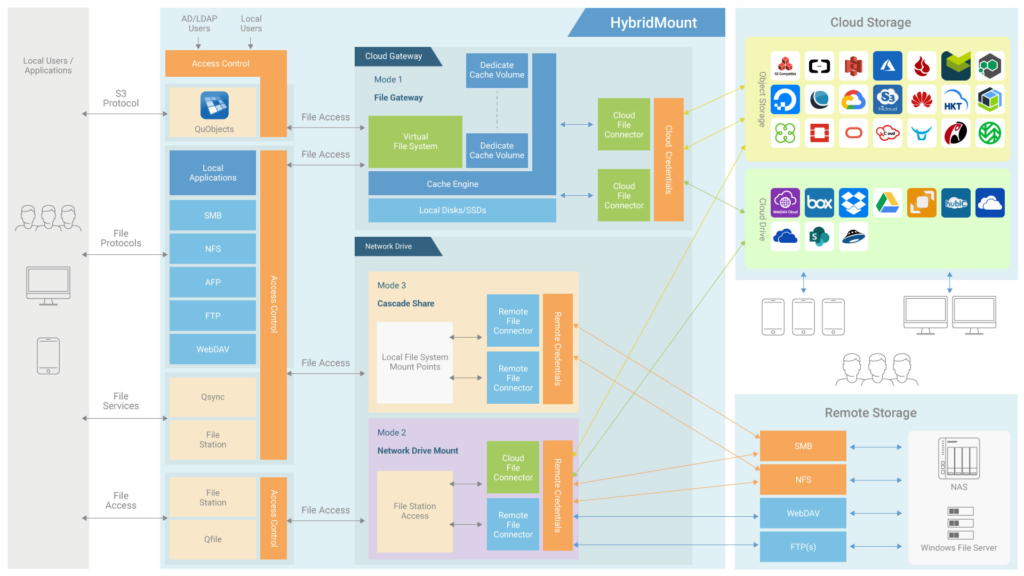
In addition to traditional storage services, in recent years, unstructured data objects storage (such as the well-known AWS S3 and the emerging Wasabi) have become mainstream low-cost cloud storage technology. HybridMount can convert unstructured data into data folder level structure, making it easier to manage files and opening the door to object storage . HybridMount supports mainstream cloud services, including file storage and object storage and continues to increase, as well as any S3 compatible object storage services and WebDAV file storage services. It can also mount non-native supported object Storage Space to NAS , enjoying more diverse cloud storage options and flexible multi-cloud management.
It is worth noting that when linking the storage service, you must customize the synchronization schedule and synchronize with the cloud Data Sync according to the schedule; you can also manually synchronize at any time. Synchronization will incur costs due to cloud requirements or storage traffic, so it is recommended to update the file list only within the time of accessing the cloud to save cloud costs.
HybridMount provides two cloud Storage Space loading modes, and one Networking volume loading mode:
- Networking disk loading: Load the public cloud space to NAS , the storage experience depends on the Networking speed, the number of loading spaces is unlimited and completely free, after loading, it can be centrally managed through File Station or Qfile Pro mobile applications, avoiding the hassle of managing different public and private cloud files separately.
- Cloud network mode: Supports SMB / AFP / NFS / FTP / WebDAV / S3 protocol storage cloud data , and can also enable local caching mechanism for related cloud services, greatly reducing read/write waiting time, making cloud storage data as smooth and fast as operating within a local network. It is ideal for online collaboration on file servers and file-level data analysis applications. HybridMount provides 2 permanently free configurable connection counts, with additional License available for purchase as needed.
- Networking volume mounting: Mount remote devices (e.g., NAS , servers) data folder via CIFS/ SMB , NFS, FTP /FTPS, or WebDAV communication protocols for centralized data storage. Additionally, remote data folder mounted via CIFS/ SMB and NFS can also be configured as local NAS shared data folder , allowing multiple local NAS users to quickly access and edit remote data folder files using existing accounts and passwords. Furthermore, remote data can be centrally managed through File Station or Qfile Pro mobile applications.
In HybridMount cloud mode, the applications provided by NAS App Center can also support storage files in the cloud space, for example:
- File Management : Use Qfiling for multi-cloud automatic archiving, easily achieving cloud migration and archiving. Through archiving conditions and multi-dimensional post-processing modules, achieve classification and editing purposes while migrating and archiving files simultaneously. Qsirch is QNAP’s NAS exclusive full-text file search tool, supporting cross-cloud file search. It allows using one search condition to search multiple cloud spaces simultaneously and presents all cloud file search results in one interface.
- Multimedia Application: QuMagie AI intelligent photo management and CAYIN MediaSign Player Multimedia player, browse Multimedia files on the cloud. Utilize QTS provided Multimedia services Video Station , Music Station , QuMagie , no matter what cloud space is used, you can enjoy a familiar and consistent Multimedia service experience.
- Editing tools: Even if the files are stored in the cloud, they can be edited through tools such as OCR Converter and Text Editor.
Before installing HybridMount , please confirm that NAS system settings and volume are configured, and the version of QTS must be 4.4.1 or above. When establishing HybridMount quick access space, at least 20GB of Storage Space is required. Then go to [ App Center ], search for HybridMount , and click [Install].
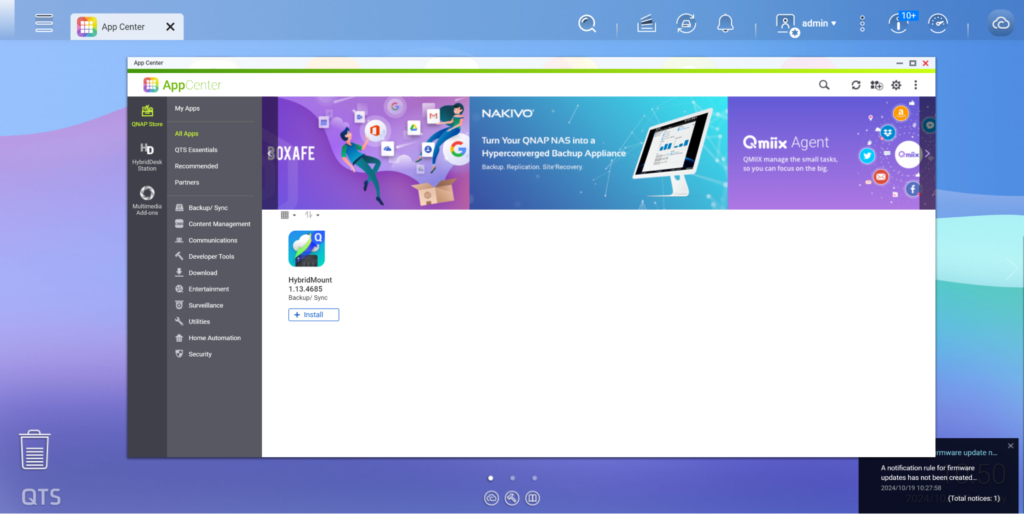
After installation, start HybridMount .
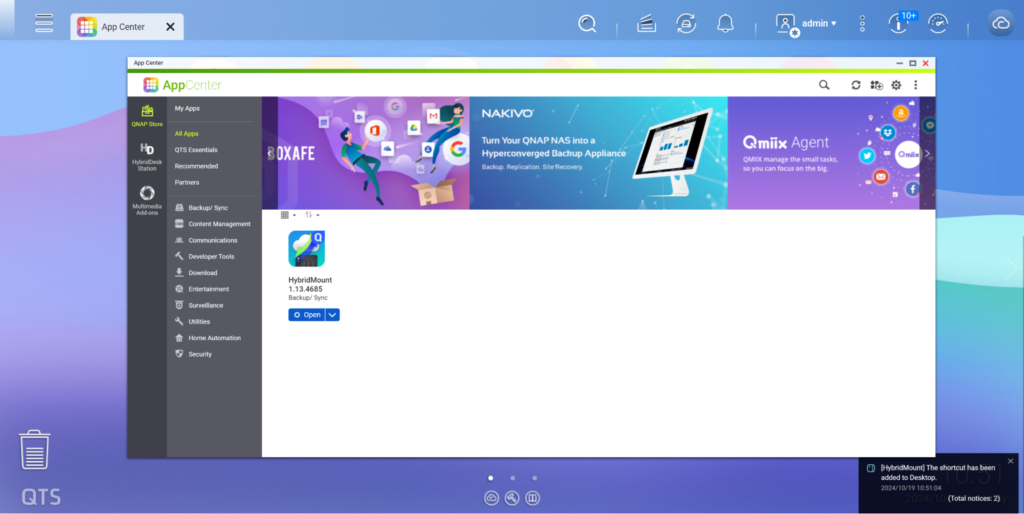
[Overview] The screen displays the number of used License connections and all License connections, quick space information, as well as relevant information about the cloud services and remote installations that have been mounted. You can purchase License , establish document-type cloud networks, or mount Networking disk devices on this screen.
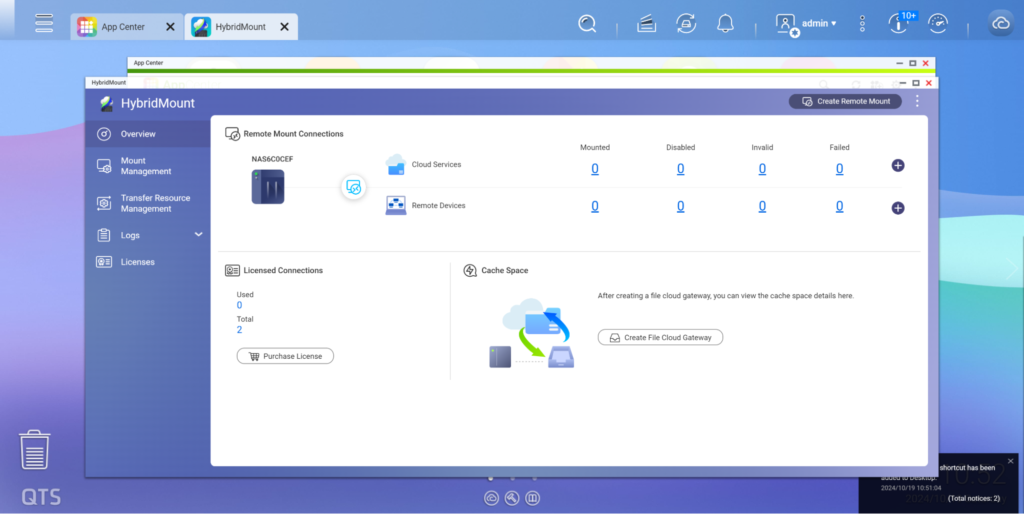
HybridMount provides two cloud storage mounting modes, which help establish a hybrid cloud environment on NAS .
HybridMount can also mount remote server data folder to NAS as a shared data folder , providing a more convenient remote file sharing solution for cross-regional offices and multi-point enterprises.
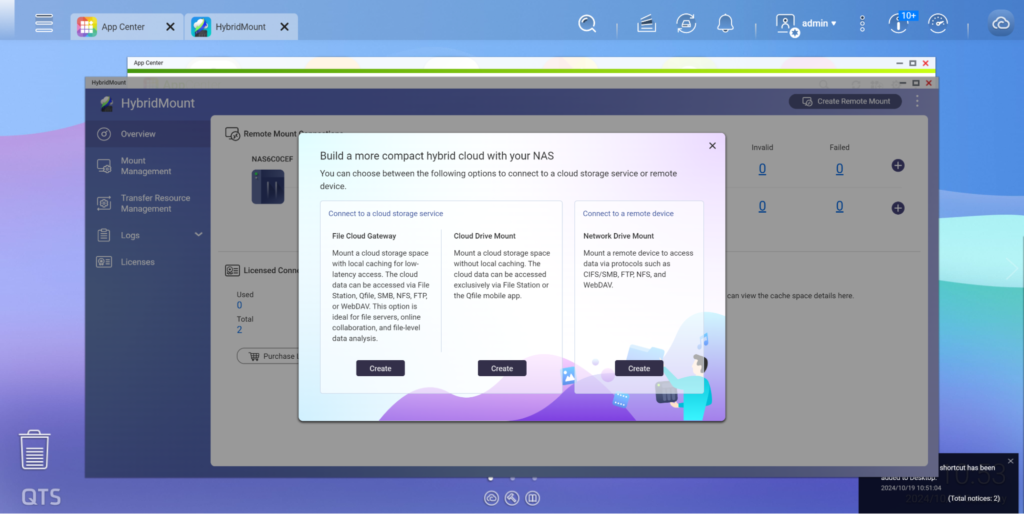
[Mount Management] The interface will display all mounted cloud services and remote devices, and provide options for setting and retrieving.
[Cloud Services] The interface displays the connections of all cloud services. In this interface, you can enable or disable connections, test connection speed, view connection information, update the quick access list of connections, edit connection settings, or delete connections.
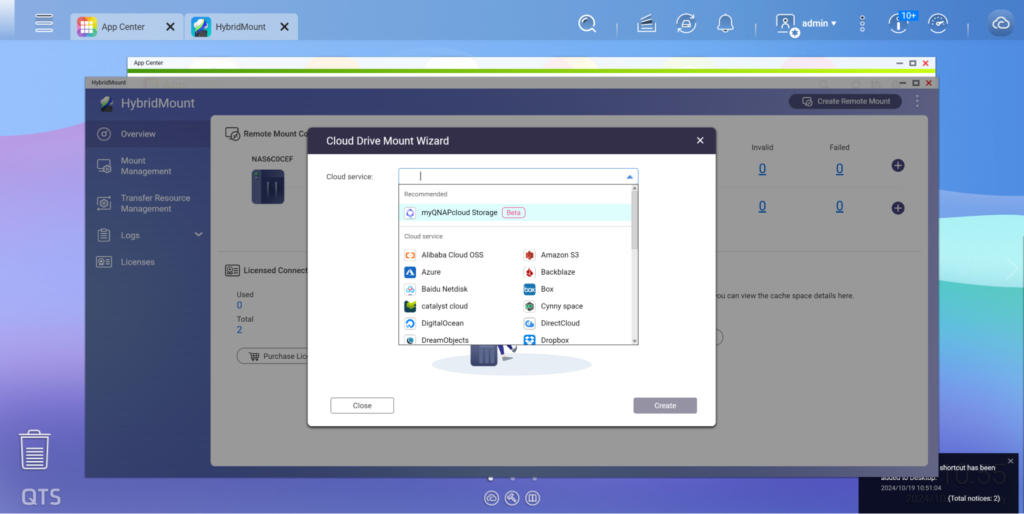
The editor first mounts the self-purchased 200GB Google Drive.
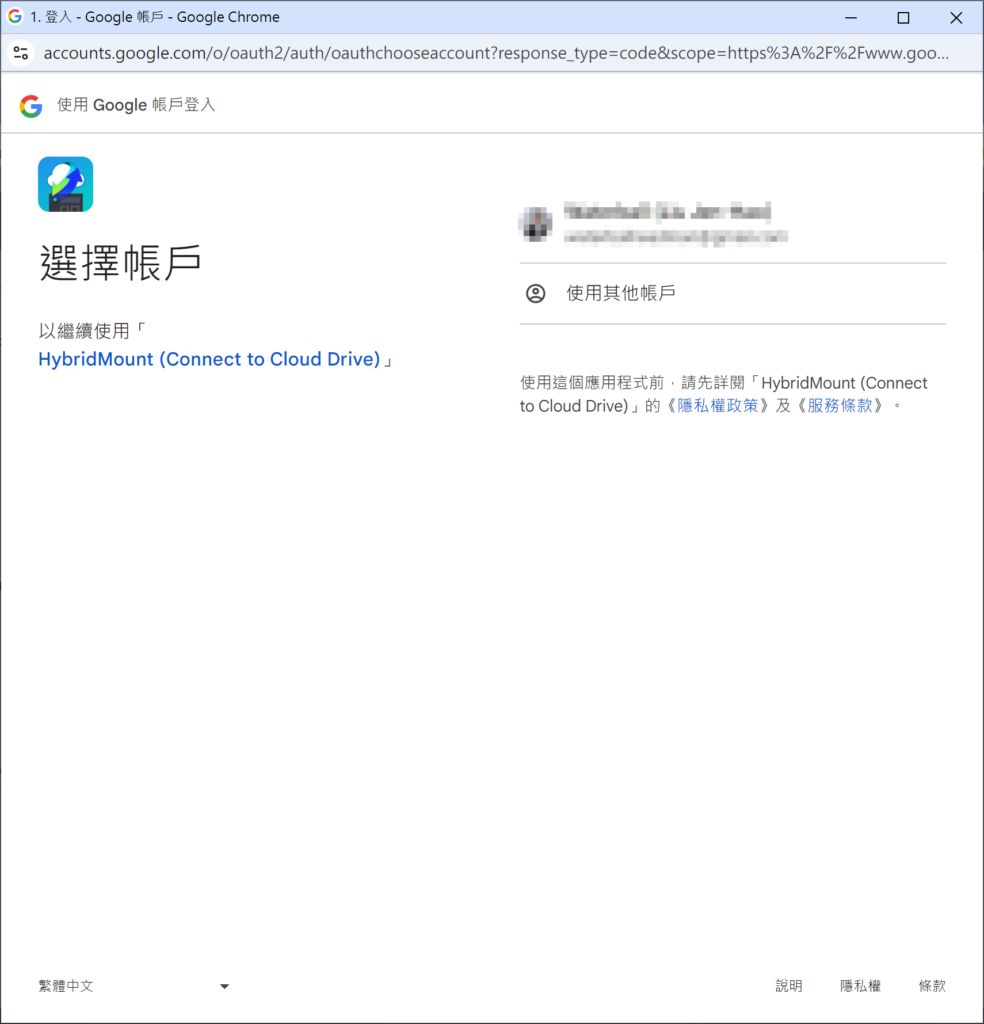
Agree to log in to HybridMount .
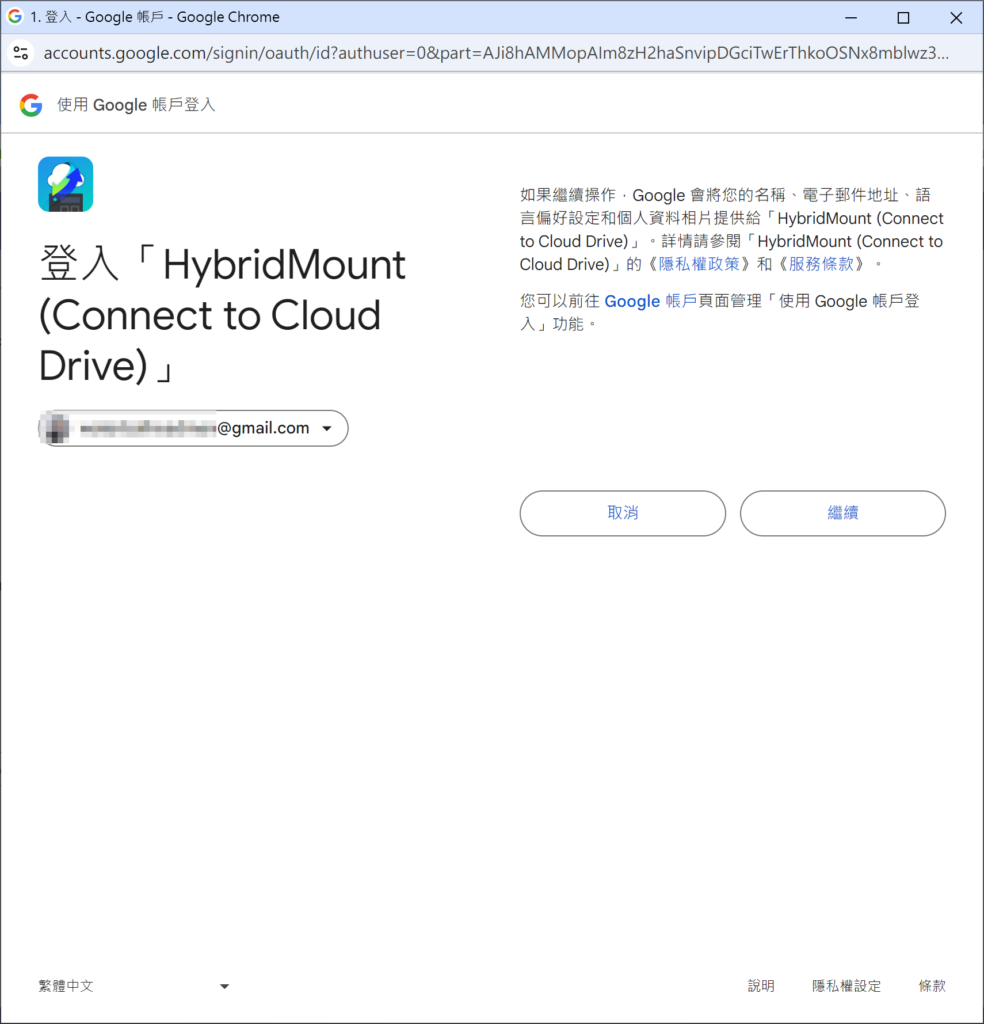
Agree to store and retrieve HybridMount on Google Drive.
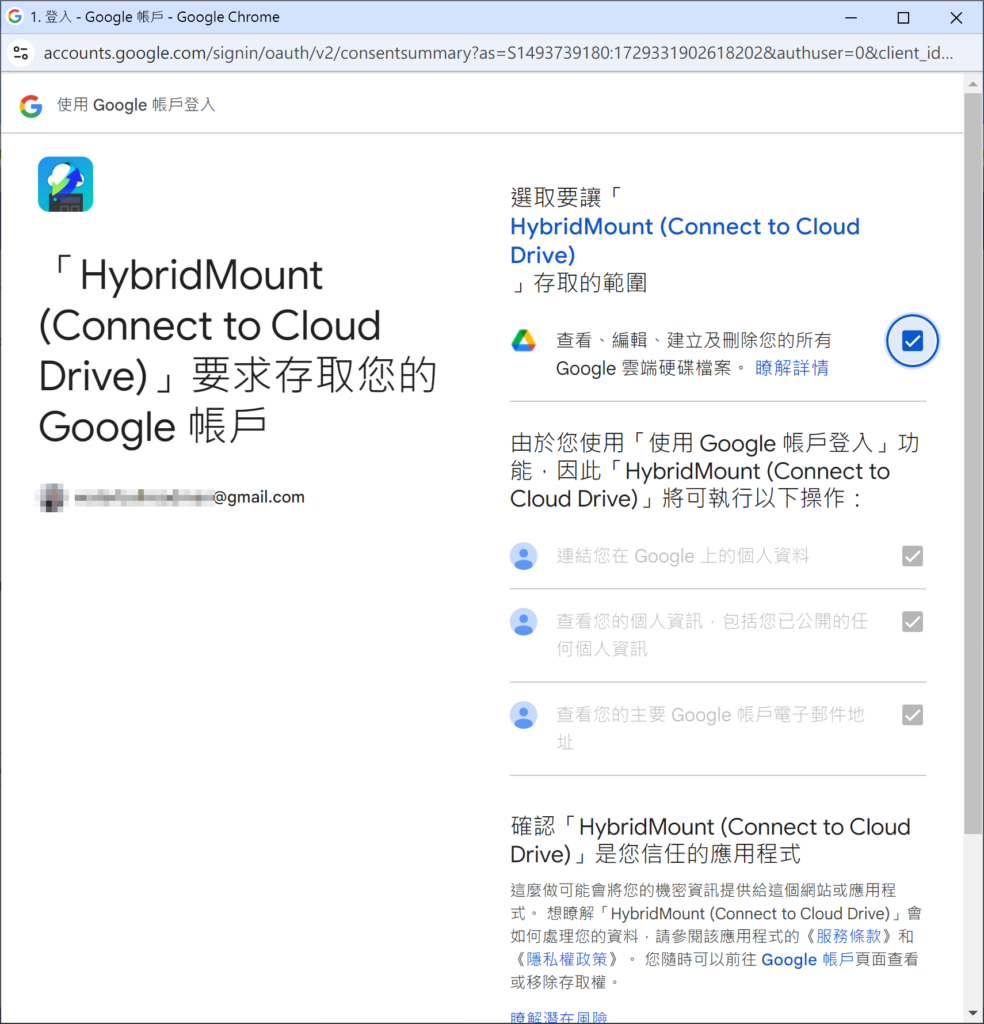
Confirm the file conflict management option, as it is a teaching test environment, so choose ‘Update files directly without checking’.
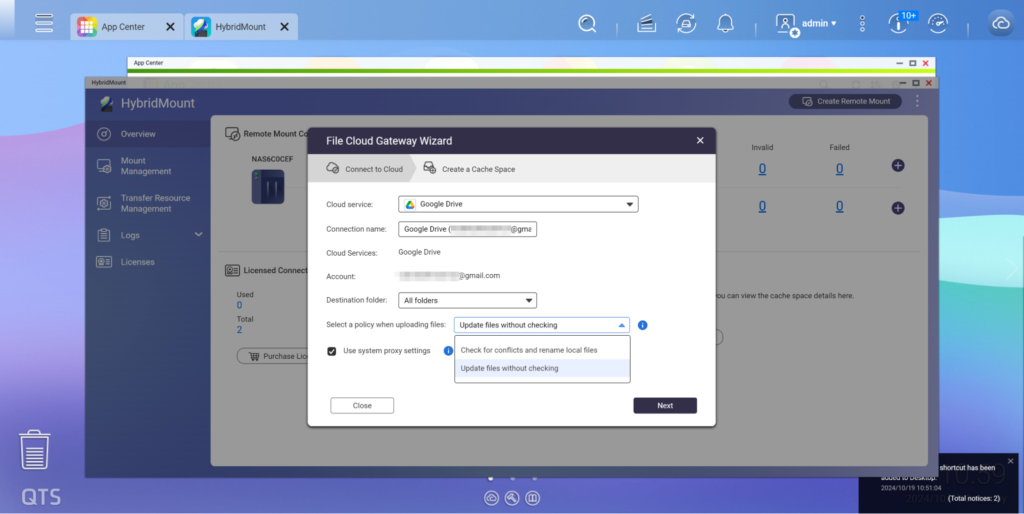
Configure pool and set quick access parameters. The recommended value for quick access space capacity configuration is: write speed NAS (megabyte /s) – upload cloud speed (megabyte /s) x continuous write time (s) x 1.4 + pre-reserve files in quick access demand. Automatic download settings can be adjusted according to the immediacy of updates, choosing ‘Pre-download all recent edited files’, ‘Download new file versions stored in quick access on this device’, and ‘Disable automatic download (files will only be downloaded after being accessed)’.
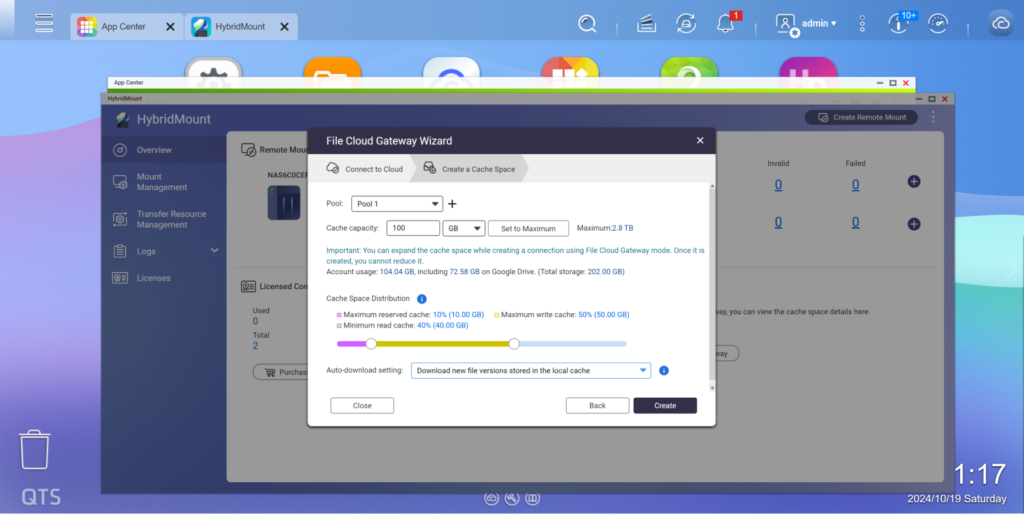
Google Drive mount complete.
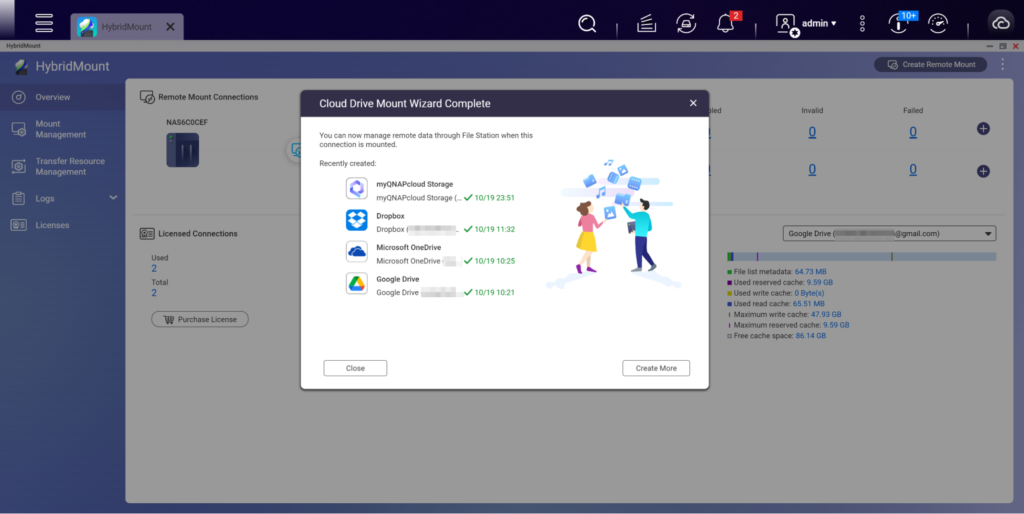
You can view the real-time status of quick access space in mount management and adjust the disk size.
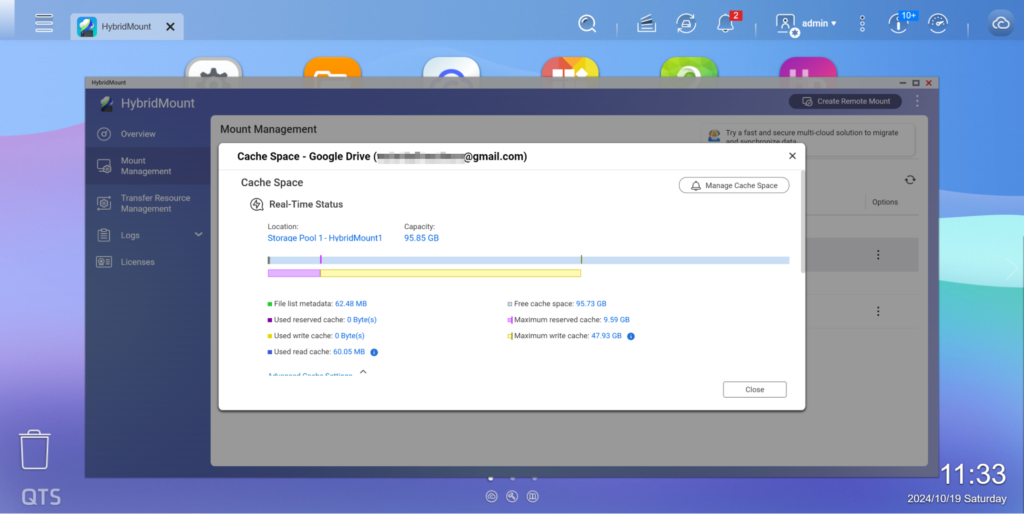
Conduct speed test.
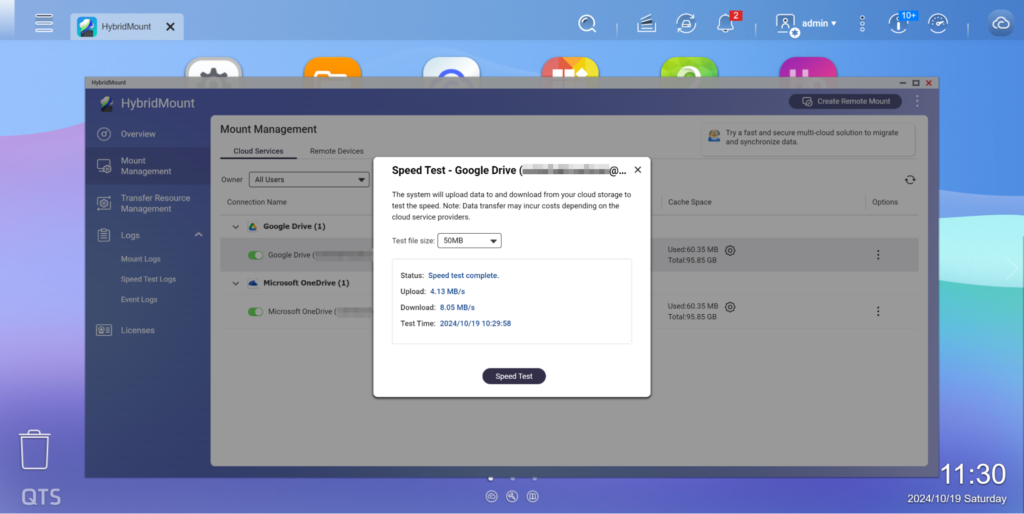
In the same way, set up Microsoft OneDrive 1TB mount.
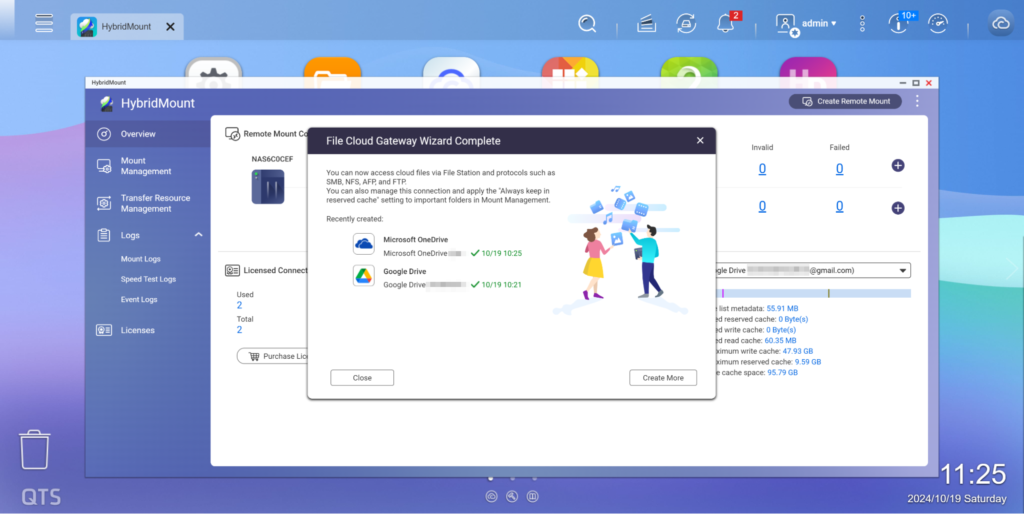
You can see that two types of cloud network License have already been used.
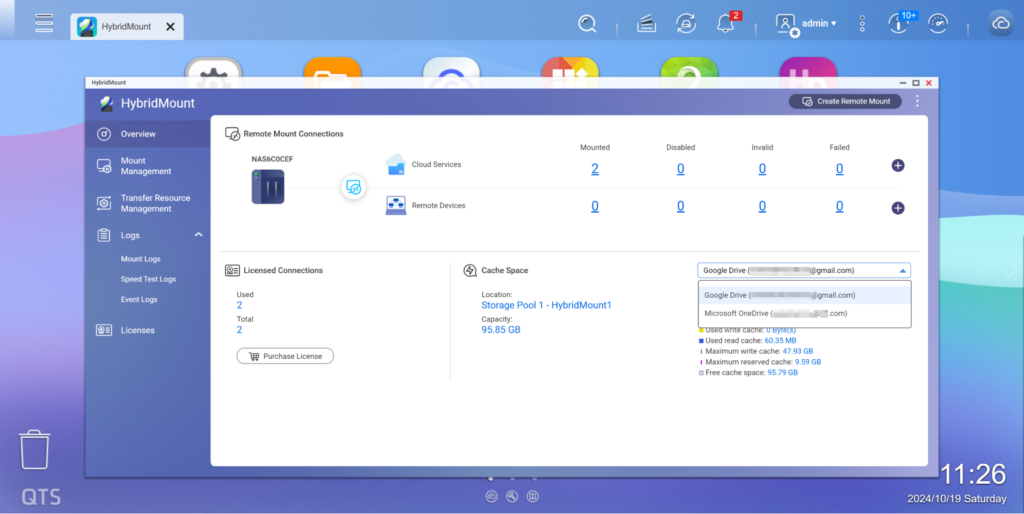
Flexible configuration quick access rules, efficiently use quick access space, such as choosing to permanently keep files in quick access, will pre-download and keep files in quick access to ensure quick access hits. Keep important and frequently accessed files in quick access.
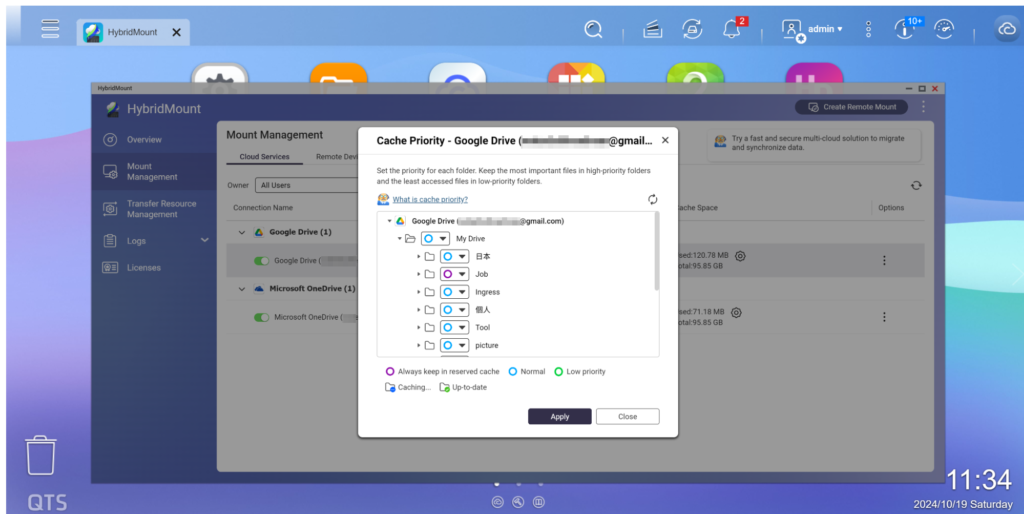
You can see the mounted cloud storage service in File Station .
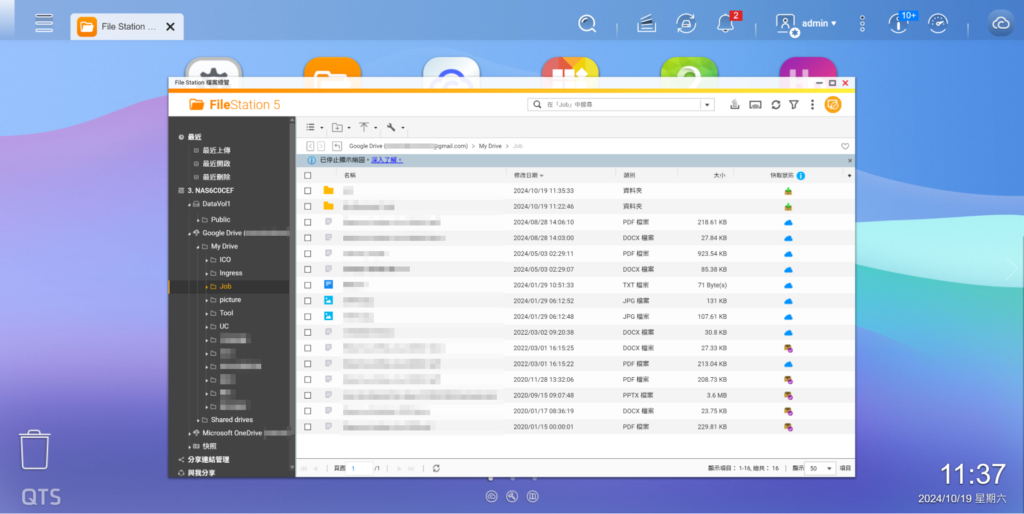
Use Windows file manager or Mac OS SMB mount to see the mounted cloud hard disk drives .
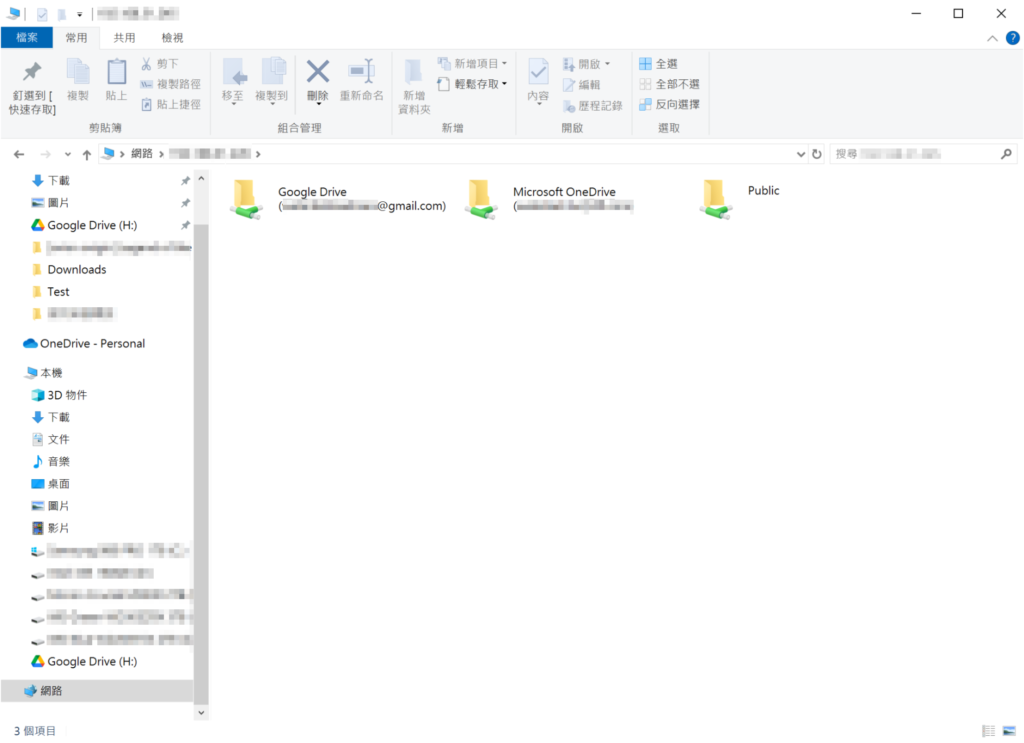
Set storage Permission in Control Panel, which is important for multi-user remote sharing.
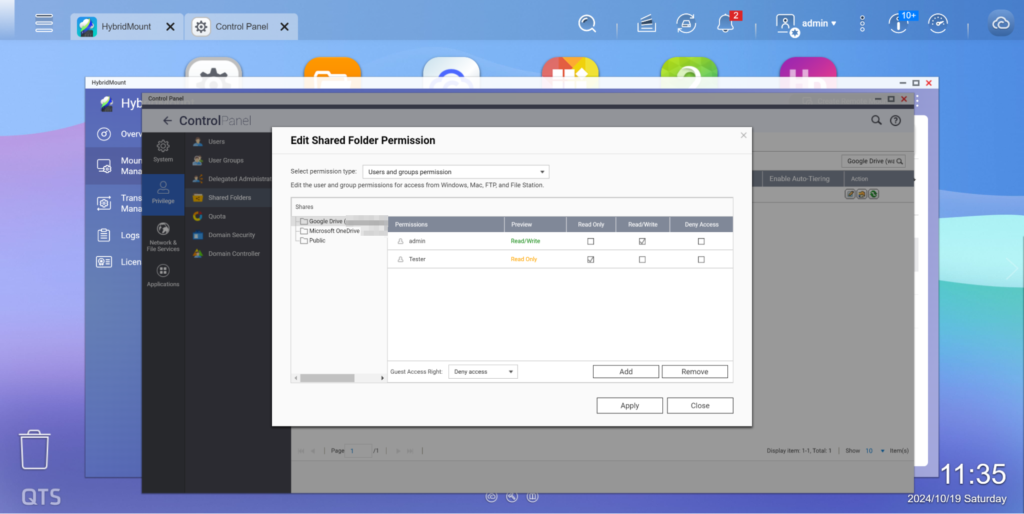
Set Networking transfer speed.
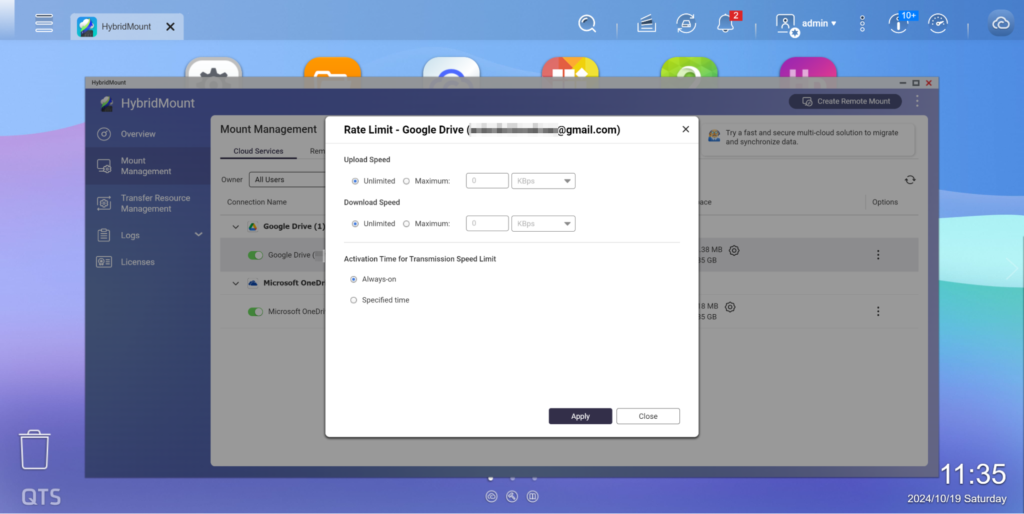
If License is sufficient, you can also switch the cloud mount to a file-type cloud network License , and vice versa.
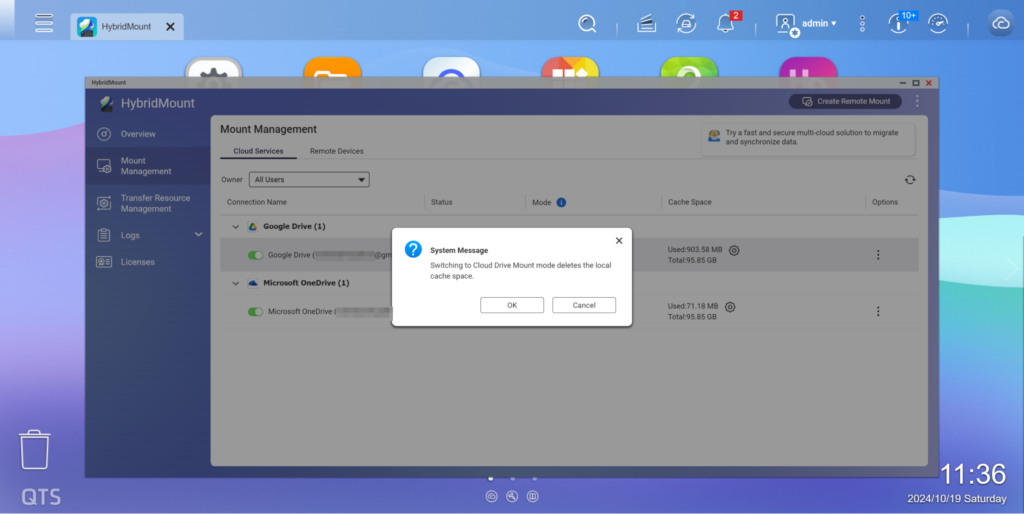
Additionally, 2GB of free Dropbox and 16GB of free myQNAPcloud Storage cloud storage are available.
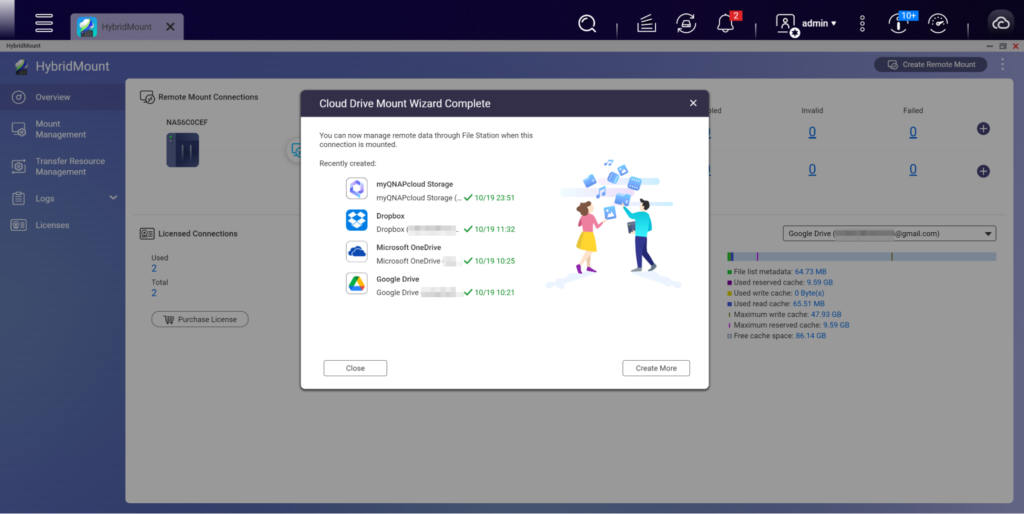
Two default License cloud storage types are included. If more are needed, additional subscriptions can be purchased: 1 for $19.99, 4 for $59.99, 8 for $99.99. For more information, please visit QNAP Software Store .
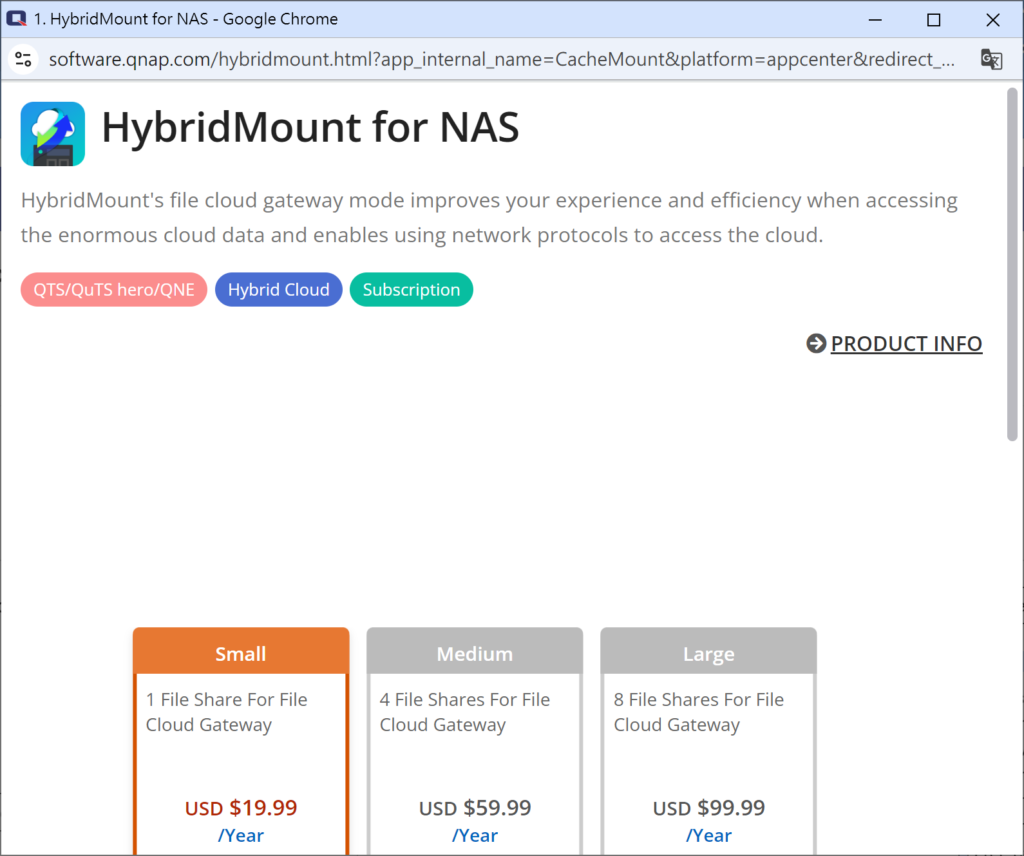
Integrate with the automatic archiving application Qfiling to organize NAS files based on specified conditions. Files can be instantly moved to different cloud hard disk drives through Qfiling , maximizing efficiency.
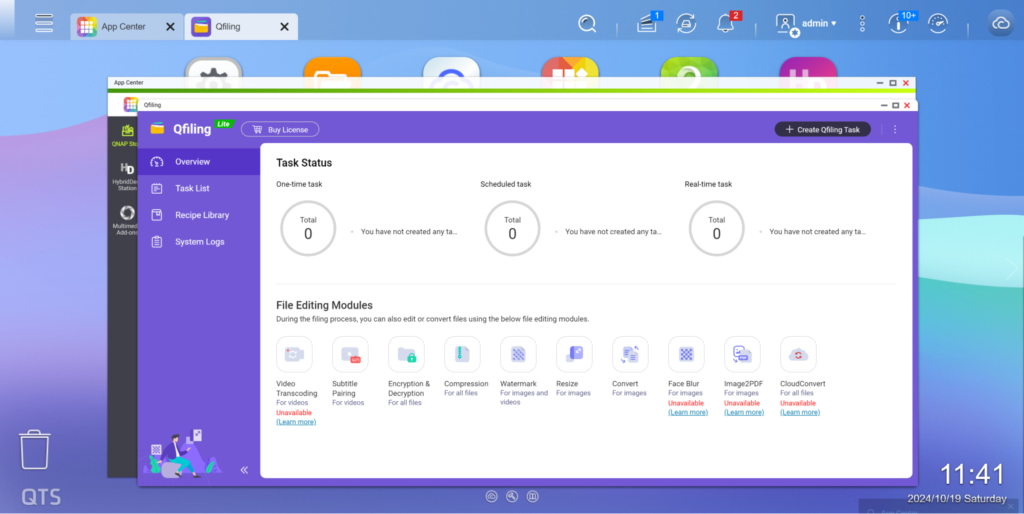
HybridMount can be further used to build global document sharing, establishing global multi-point synchronization and joint management through the network. Cloud storage can be accessed globally, achieving document synchronization and unified collection of global data points data , with the freedom to expand storage space. Storage agreements allow users to store and retrieve data in a way they are accustomed to. NAS local quick access makes cloud document storage experience similar to local integration. Local NAS users manage Permission , saving the time and effort of traditional VPN storage methods.
Make NAS and HybridMount as cloud gateways, administrators can configure NAS local users Permission and through the cloud space
LDAP / AD configuration domain users Permission , allocate shared cloud space Permission to local users. When all end users directly access the cloud through PC for storage, synchronization, etc., causing a large amount of bandwidth usage and long waiting times, make NAS and HybridMount as cloud gateways, with NAS unified external storage or synchronization, and PC connecting to NAS storage data through regional Networking , saving enterprise external bandwidth usage costs, increasing transmission efficiency, and speeding up storage access.
According to different application levels, QNAP recommends SMB entry-level TS-433eU , SMB mid-level TS-AI642 or TS-664 , SMB high-level TVS-h874T or TS-855eU , and enterprise-level TS-h1677AXU-RP or TS-h3087XU-RP . Through HybridMount cloud / remote Storage Space mounting or cloud network functions, it meets the needs of enterprises for hybrid cloud deployment, local data cloud, backup and restore , or mobile cloud collaboration.
Learn more: HybridMount cloud space and file server mounting